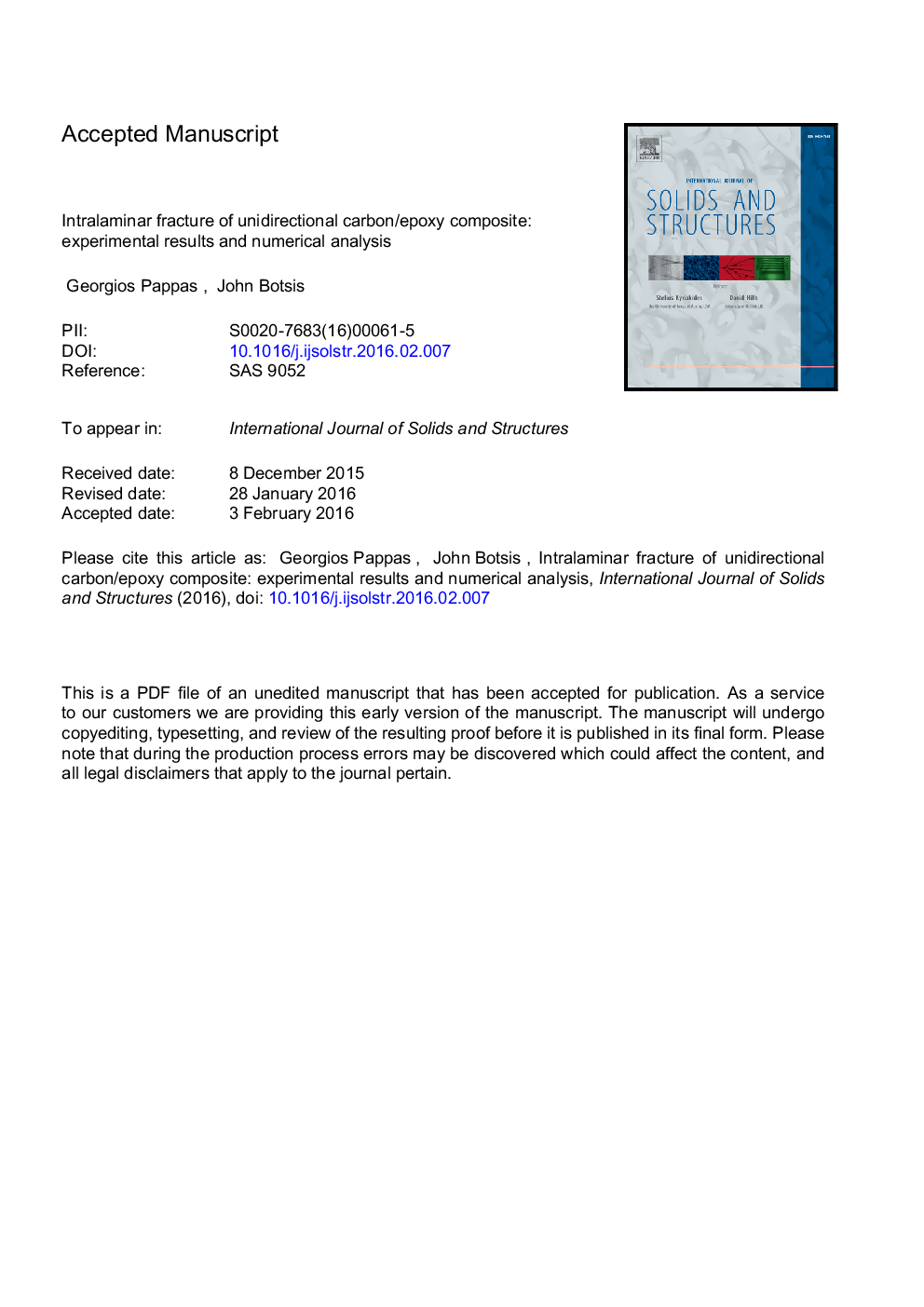| Article ID | Journal | Published Year | Pages | File Type |
|---|---|---|---|---|
| 6748571 | International Journal of Solids and Structures | 2016 | 56 Pages |
Abstract
Fracture of carbon fiber reinforced polymers (CFRPs) is dominated by large scale fiber bridging which acts as a very important toughening mechanism. The objective of this paper is to investigate the intralaminar Mode I fracture in a unidirectional CFRP composite in double cantilever beam specimens with thickness HÂ =Â 6, 10 and 14Â mm with a symmetric intralaminar precrack introduced by a thin diamond wire saw. Optical fibers with 10 multiplexed Bragg grating sensors are glued onto the upper surface of selected specimens of HÂ =Â 6 and 10Â mm, to measure the axial strain profile during fracture. The bridging tractions are expressed as a function of the maximum bridging stress, the bridging zone length and exponential softening parameter. The measured strains are input to an inverse parametric numerical model to obtain the traction separation relation due to bridging. The optimized strain distribution corresponds to a bridging traction profile, with a maximum bridging traction of â¼8.3Â MPa. This stress is 6 times larger than the corresponding in interlaminar fracture value. The resultant resistance-curves increase with sample thickness in corresponding steps of 20%. The plateau energy release rate is â¼2.3 times higher than the corresponding interlaminar one, although having the same initial fracture toughness. The calculated energy contribution of bridging agrees very well with the produced resistance-curves. The resultant bridging law is applied over a cohesive element model to reproduce the load-displacement curves.
Related Topics
Physical Sciences and Engineering
Engineering
Civil and Structural Engineering
Authors
G. Pappas, J. Botsis,
